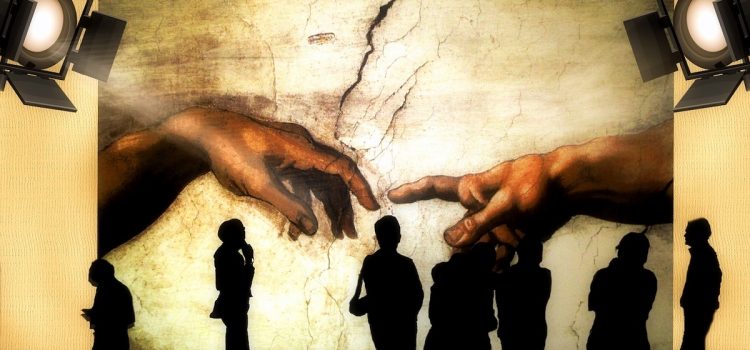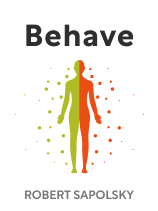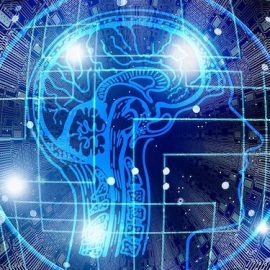

This article is an excerpt from the Shortform book guide to "Behave" by Robert Sapolsky. Shortform has the world's best summaries and analyses of books you should be reading.
Like this article? Sign up for a free trial here .
What’s the connection between environment and behavior? Can environment override genetic influences?
There’s no doubt that genes determine much of your personality and behavior. However, external influences—including how we’re raised, where we are at a given moment, and what’s happening around us—are even more important in determining how we act.
Keep reading to learn how environment shapes human behavior, according to Sapolsky.
Culture: How We’re Raised
Humans, like many other animals, instinctively want to fit in. We want to be part of the in-group, so we obey our culture’s rules, follow its beliefs, and expect others to do the same. Realizing that we’re not matching the people around us can cause serious anxiety—just imagine showing up to a fancy party in jeans and a t-shirt.
Interestingly, studies show that our most deeply held values aren’t things that we consciously think about following. For example, someone who’s been raised to be honest doesn’t decide to tell the truth or overcome the temptation to lie; that temptation never arises in the first place. In other words, you’ll reflexively follow whatever core values you were raised with, unless you make an active effort to do otherwise.
Religion: What We Believe
Throughout history, one of the most influential parts of a person’s upbringing has been his or her religion. Sapolsky says that all religions share a few traits in common, which makes them ideal for understanding cultural effects on behavior:
- Religions are a powerful in-group versus out-group catalyst. Religious communities can offer strong emotional and material support to their members, but they can be hostile—sometimes violently so—toward people who don’t follow that religion.
- Religions teach rules and codes of ethics. These rules often come with promised rewards for following them, and severe punishments (in this life or in the afterlife) for breaking them.
- Believers practice rituals: fixed, familiar behaviors that promote feelings of control, comfort, and belonging. Examples include prayer, meditation, singing and dancing, and coming-of-age ceremonies.
- coming-of-age ceremonies.
| Religious Environment and Behavior Beliefs such as religion influence our behaviors in various ways, based largely on how strongly we hold those beliefs and how emotionally invested we are in them. In Awaken the Giant Within, Tony Robbins breaks down beliefs into three categories: 1. Opinions: the weakest kind of belief, with little emotional investment. For example, preferring tea to coffee is an opinion—someone might state that preference but wouldn’t feel the need to defend it and might even find that opinion changing over time. 2. Beliefs: much stronger than opinions and based on personal experiences or information from trusted sources. People generally aren’t willing to listen to anything that contradicts a belief; they’ll ignore or deny any such information. However, close friends or trusted authorities on that subject may be able to change those people’s minds over time. 3. Convictions: the strongest type of belief and central to our understanding of the world, and we shield them with intense emotions. We’re likely to become angry and combative if anyone—even a close friend—so much as questions one of our convictions. |
Physical Environment
Sapolsky says people will instinctively act in ways that match their physical surroundings. For instance, people are more likely to commit crimes when evidence of other crimes is present—they might drop their trash on the ground if there are signs of vandalism nearby. In more general terms, people are more likely to violate social and ethical norms if it seems like others have already done so. However, Sapolsky says that the reverse is also true: People are more likely to behave themselves and follow the rules if the environment is clean and orderly.
Our physical environments can also affect us biologically. For example, if you see a dangerous animal, your body will activate genes that cause you to produce adrenaline, so you’ll be ready to fight or run away. Conversely, locking eyes with a child or a pet causes you to produce extra oxytocin, producing feelings of love and kinship.
(Shortform note: Sapolsky mainly discusses the immediate effects of what we can observe around us, but our physical environment affects us in many other, longer-term ways too. For example, certain types of air pollution can cause changes in behavior, mood, and overall health, with effects ranging from irritability to allergies and asthma. Similarly, exposure to heavy metals such as lead can cause increased aggression, fatigue, and memory loss.)
Social Environment
Just like our physical environment and moral codes can influence how we behave, so too can the people who are around us. For a clear and easy example, imagine how you act around your best friend compared to how you act around your boss—in most cases, your behavior will be wildly different.
We’ve already discussed the human tendency to divide people into in-groups and out-groups, but we also subdivide our in-groups into ranks—in Sapolsky’s words, we have hierarchies. We tend to feel closer to those who are close in rank to us in those hierarchies. For example, an office worker would likely feel more kinship with his coworkers than with either the company CEO or the janitor.
A hierarchy is different from typical “us versus them” dynamics because all members are still part of the same group, and (at least in theory) all work together for the common good.
Furthermore, Sapolsky points out that the effects of our social environments go beyond influences from people we personally know. For instance, men tend to become more aggressive and take greater risks when women are present. Also, in situations where helping someone would be inconvenient (but not dangerous), the more people there are present, the less likely anyone is to step forward to help—the so-called “Bystander Effect.”
In situations where helping would be dangerous, however, people are actually more likely to step in if there are witnesses nearby. That might be because of the chance to be recognized as a hero, or perhaps simply because it seems more likely that we’ll have backup if things get out of hand.

———End of Preview———
Like what you just read? Read the rest of the world's best book summary and analysis of Robert Sapolsky's "Behave" at Shortform .
Here's what you'll find in our full Behave summary :
- An exploration of the myriad influences on human behavior
- A scientific look at why some people do such terrible things
- If there's really such a thing as free will






